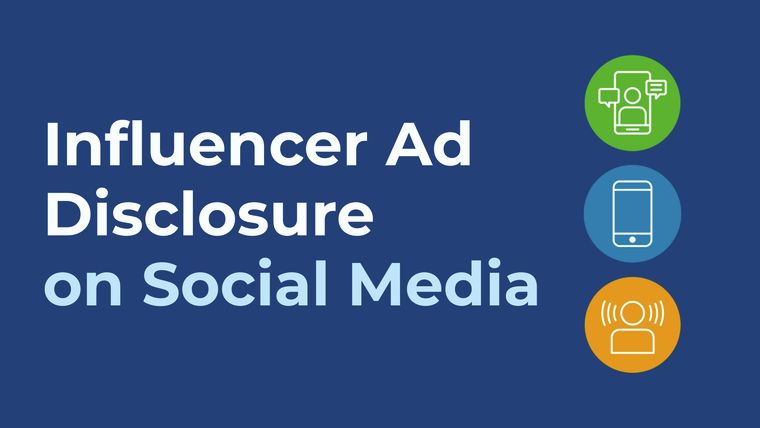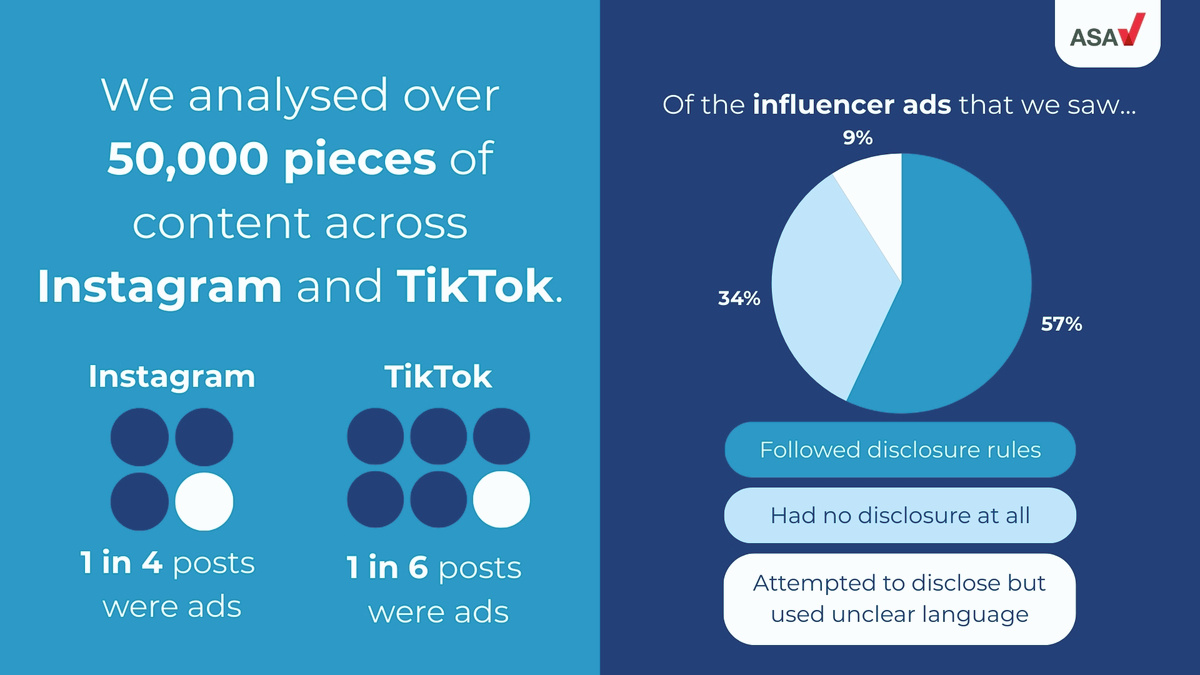
Today, we’ve published our latest report looking at the rates at which influencers are sticking to the rules on making it clear when their posts are ads. The report indicates that the positive trend for open and honest disclosure is continuing and rising, but influencers, brands, agencies and platforms need to continue to work to ensure all the ads users engage with on social media are clearly disclosed.
To assess how well influencers are complying with our ad disclosure rules and following on from our first Influencer Ad Disclosure report (published in 2021), we’ve undertaken a second monitoring exercise, this time powered by our AI-based Active Ad Monitoring System. This system analysed over 50,000 pieces of content including Stories, Reels, and posts across Instagram and TikTok, from 509 UK-based accounts and 390 individual influencers. A sample of this material was then reviewed by our experts.
The sample included influencers previously flagged in our 2021 report, influencers brought to the attention of ASA/CAP in the year prior to the 2024 monitoring, and a random selection of influencer accounts to reflect what the public may typically see on their feeds. This approach allowed us to track persistent issues and spot emerging trends in how influencer ads are being disclosed — or not.
Key findings
- Approximately 57% of the influencer ads we analysed stuck to our rules on ad disclosure.
- 9% of advertising content did attempt to use a disclosure label, but the language used failed to make the commercial nature of the content clear.
- 34% of the influencer ads we saw included no disclosure at all.
- More than half of influencer ads related to the promotion of products and services in the fashion and travel sectors and were either undisclosed or poorly disclosed.

Transparency is important – people should always know when they’re being advertised to so they can make informed choices. Without clear disclosure, ads can be misleading and risk undermining trust in influencer content.
We’re reminding influencers, brands, agencies, and platforms that they all share a responsibility to make sure ads are clearly and consistently disclosed to audiences. The rules are clear: if you’re paid in any form — whether through money, gifts, trips or products — and the brand has shared control over the content, the post must be obviously identifiable as an ad.
We’ll be sharing our findings with the influencers whose content we reviewed, as well as with TikTok and Instagram. As part of our ongoing commitment to education, we’ll continue supporting influencers and brands with clear guidance. But where we see persistent non-compliance, we will use technology to help take enforcement action, applying sanctions where necessary.
Social media continues to reshape how we connect, share and consume content — and with that comes new challenges for ad regulation. Our AI monitoring will continue to play a key role in helping us take targeted action and improve compliance.
Ed Senior, Senior Compliance Executive at the ASA said:
“Whilst today’s report shows that many influencers are disclosing their ads, we want this number to be higher. In a world dominated by social media, it’s vital that people are able to tell what’s advertising and what’s not. We’re here to support influencers and brands in getting it right, but where we see repeat breaches, we won’t hesitate to take action. Our message is simple: if it’s an ad, make it obvious.”
More on
-
Keep up to date
Sign up to our rulings, newsletters and emargoed access for Press. Subscribe now.


